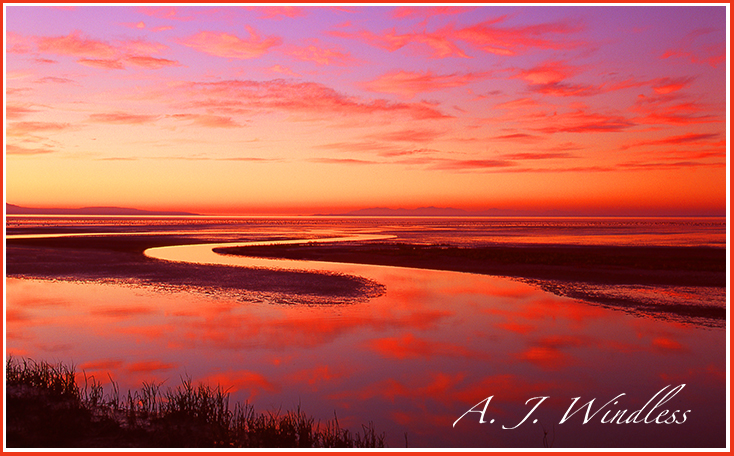 |
 |
| The Road to the Lake |
|
A winding road out to the lake, this inlet feebly replenishes
some of the evaporating water. If you look closely just below
the horizon you will see thousands of birds. There are six bird
refuges along the northeastern edges of the Great Salt Lake and
the entire area serves as a major migration route for birds
throughout the western states. You will see swans, geese,
egrets, cranes, ducks, eagles, and probably just about anything
thing that lives in this part of the country. One night I helped a ranger count over 5,000 white swans. She had to estimate the size of the flock, how high it was, and what direction it was going. Flocks were going by so quickly that she had to speak into a recording as fast as she could, only stopping to add up the numbers after the counting was finished. Utah may be a desert climate, but during April the mountains above Salt Lake City typically pack 125 inches of snow on the ground. All of that snow melts and feeds the valley, but none of it reaches the sea. It all comes here to the Great Salt Lake where there are no outlets. After providing water for farming and industry, and water for the toilets, showers, and lawns of over 2 million people, by the time these streams reach the lake there isn't much left. Here, for example, the water flows so slowly that there aren't any ripples, and you can see it is not enough to sustain a shrinking lake. The Great Salt Lake, however, does go through its cycles. At one point it had risen so high that a news station back east ran a story and my mother called to see if I was okay. The flooding had only been in the areas near the lake, but as happens all too often, the news was a bit hasty to over dramatize the situation. Nevertheless, the governor was so worried the flooding would get worse that he spent 60 million dollars to build three massive pumps to drain water from the lake out onto the western desert. He finished construction and turned the pumps on just as Utah came out of its wet cycle and since then the pumps have sat idle out on the western desert for over 30 years, earning them the distinguished nickname "Bangerter's Folly". Also see "What Once Was" (click here) and "When She Still Had Water" (click here) |